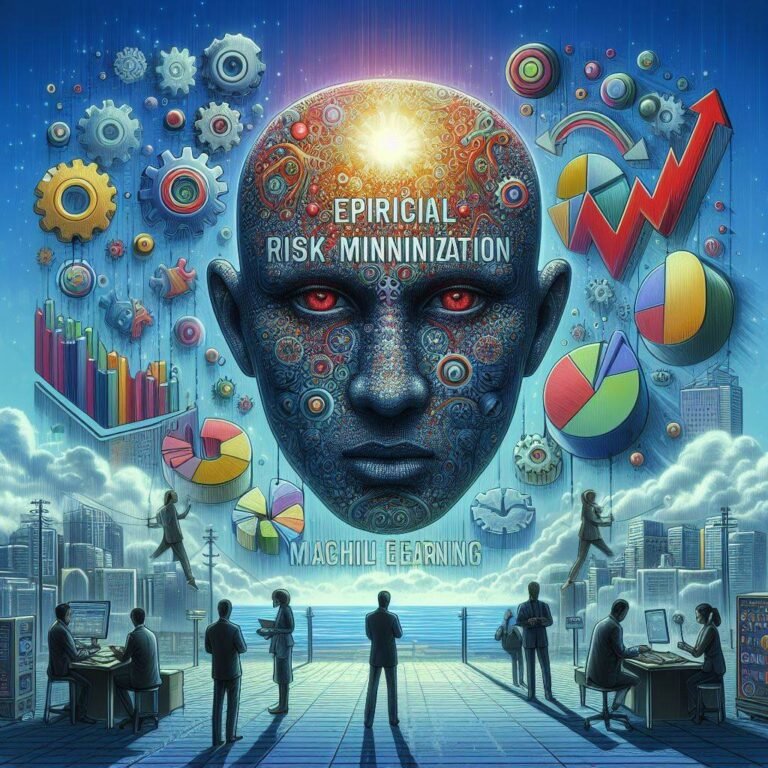14 Days Machine Learning by Python Pdf
Embarking on a journey into Machine Learning (ML) can seem daunting. However, with Python’s intuitive libraries and vast community support, mastering ML techniques can be streamlined into a 14-day intensive program called the “14 Days Machine Learning by Python PDF.” This guide is meticulously designed to walk you through the essentials of Machine Learning using Python, starting with the basics and progressively advancing to more complex algorithms. Whether you are a novice looking to get started or someone seeking to brush up their skills, this comprehensive guide is your gateway to becoming proficient in Machine Learning.
Setting Up Your Python Environment for Machine Learning
Day 1: Environment Setup
Setting up a solid Python environment is foundational to your success in learning machine learning. This initial setup day ensures you have all the necessary tools installed and configured correctly. Here’s a detailed breakdown of the tasks you should complete:
- Install Python:
- Download Python: Go to the official Python website and download the latest version for your operating system.
- Installation Process: Follow the instructions on the website to install Python. Make sure to add Python to your system’s PATH to ensure it can be accessed from the command line.
- Set Up Anaconda:
- Why Anaconda?: Anaconda simplifies package management and deployment. It includes a suite of over 1,500 open-source packages, making it highly recommended for data science and machine learning projects.
- Download and Install Anaconda: Visit the Anaconda distribution page, download the installer for your operating system, and execute the installer. Follow the on-screen instructions to complete the installation.
- Verify Anaconda Installation: Open your command line interface and type
conda list. A list of installed packages should appear, confirming that Anaconda is installed correctly.
- Verify Python Installation:
- Check Python Version: In your command line, type
python --versionorpython3 --versionto ensure the correct version of Python is installed. - Test Execution: Try running a simple Python command to confirm everything is set up correctly. For example, you could run
python -c "print('Hello, Machine Learning!')"to print a greeting message.
- Check Python Version: In your command line, type
- Set Up Your Development Environment:
- Install Integrated Development Environment (IDE): While you can use any text editor for Python code, an IDE can provide more comprehensive tools for debugging and writing code. Popular choices include PyCharm, VSCode, or Jupyter Notebooks, which come with Anaconda.
- Customize Your IDE: Customize your IDE settings to suit your coding preferences. This might include setting themes, configuring Python interpreters, or installing useful plugins for Python development.
- Familiarize Yourself with the Command Line:
- Basic Commands: Learn basic command-line operations which are essential for managing Python scripts and packages. Commands such as
cd,dirorls, andpip installare fundamental. - Using
pip:pipis Python’s package installer. Practice installing a package by typingpip install numpy. This command downloads and installs the NumPy package, crucial for handling arrays and matrices in Python.
- Basic Commands: Learn basic command-line operations which are essential for managing Python scripts and packages. Commands such as
- Explore Additional Tools:
- Version Control: Consider setting up a Git repository for your projects if you plan to work on larger projects or collaborate with others. GitHub provides free repositories and is an excellent place to host and review code.
- Virtual Environments: Learn how to create isolated Python environments with
condaorvenv. This practice is beneficial for managing dependencies and keeping your projects organized.
By the end of Day 1, you should have a fully functional Python environment ready for the next steps in your machine learning journey. This setup is not just about installation—it’s about creating a workspace that will help you learn and apply machine learning efficiently.
Understanding Machine Learning Concepts and Terminology
Day 2: Core Concepts
On Day 2 of the “14 Days Machine Learning by Python PDF,” you will get acquainted with essential machine learning concepts and terminology. Here’s what you need to cover:
- Key Definitions:
- Algorithm: A set of rules or instructions given to an AI model to process data.
- Model: The output of an algorithm trained with data, used for making predictions.
- Training: The process of teaching a machine learning model using data.
- Testing: Evaluating the performance of a model using new data.
- Types of Machine Learning:
- Supervised Learning: Models predict outcomes based on labeled training data. Used for tasks like classification and regression.
- Unsupervised Learning: Algorithms find hidden patterns or structures in unlabeled data. Common for clustering and association tasks.
- Reinforcement Learning: Models learn to make decisions through trial and error using rewards and penalties, often used in robotics and gaming.
Exploring Python Libraries Essential for Machine Learning
Day 3: Key Libraries
-
- NumPy: A fundamental package for scientific computing with Python. It provides support for large, multi-dimensional arrays and matrices, along with a large collection of high-level mathematical functions to operate on these arrays.
- Pandas: Essential for data manipulation and analysis, offering data structures and operations for manipulating numerical tables and time series.
- Scikit-learn: A simple and efficient tool for data mining and data analysis built on NumPy, SciPy, and matplotlib. It supports various supervised and unsupervised learning algorithms.
- Matplotlib: A plotting library for creating static, interactive, and animated visualizations in Python.
Data Collection and Preprocessing Techniques
Day 4: Preparing Your Data
- Data Collection:
- Methods for Gathering Data: Learn how to gather data from various sources such as databases, APIs, or public data sets. Understand the importance of data quality and quantity in machine learning.
- Cleaning Data:
- Handling Missing Values: Explore techniques such as imputation or removing rows/columns to deal with missing data effectively.
- Outliers: Identify and manage outliers that could skew the results of your model either by modifying or removing them.
- Feature Selection:
- Choosing the Most Relevant Features: Utilize techniques like correlation matrices, backward elimination, or machine learning algorithms like Random Forest to identify and select the most significant features that impact your model’s performance.
Introduction to Supervised Learning with Python
Day 5: Supervised Learning Fundamentals
-
- Concept Overview:
- Understanding Labeled Data: Labeled data is essential in supervised learning as it includes both the input features and the output labels that are used to train the model. This data helps the algorithm learn to predict the outputs from the inputs.
- Popular Algorithms:
- Linear Regression: Used for predicting continuous outcomes. It establishes a relationship between dependent and independent variables by fitting a linear equation to observed data.
- Logistic Regression: Despite its name, it’s used for classification tasks, not regression. It estimates the probability that an instance belongs to a particular class.
- Support Vector Machines (SVM): Effective in high-dimensional spaces, SVM is primarily used for classification but can also be used for regression. It works by finding the hyperplane that best separates different classes in the feature space.
- Concept Overview:
Practical Exercises on Regression Models
Day 6: Hands-On Regression
- Simple Linear Regression:
- Implementing with Scikit-learn: Learn to use Scikit-learn to implement simple linear regression. You’ll start by selecting a dataset, splitting it into training and testing sets, and then use the
LinearRegressionclass to train your model and make predictions.
- Implementing with Scikit-learn: Learn to use Scikit-learn to implement simple linear regression. You’ll start by selecting a dataset, splitting it into training and testing sets, and then use the
- Multiple Linear Regression:
- Working with Multiple Inputs: Multiple linear regression involves more than one input variable. You’ll learn how to extend the simple linear regression model to accommodate multiple independent variables, which increases the model’s complexity and predictive power.
- Evaluating Performance:
- Metrics like Mean Squared Error (MSE): Understanding model performance is crucial. You’ll explore how to use metrics such as Mean Squared Error and R-squared to evaluate the accuracy of your regression models. These metrics help determine how well your model’s predictions match up against the actual data.
Classification Techniques and Implementing Decision Trees
Day 7: Classification and Decision Trees
- Classification Basics:
- Binary and Multi-class Classification: Binary classification involves distinguishing between two classes, such as yes/no or spam/not spam. Multi-class classification involves categorizing data into more than two categories, like classifying types of fruits or predicting weather conditions.
- Decision Trees:
- Building and Visualizing Decision Tree Models: Decision trees are a type of model that makes decisions based on asking a series of questions. Using libraries like Scikit-learn, you will learn how to build a decision tree model by training it on labeled data. You’ll also explore how to visualize these models to understand how decisions are being made at each node.
Unsupervised Learning: Clustering with Python
Day 8: Exploring Clustering
- K-means Clustering:
- Theory: K-means clustering aims to partition n observations into k clusters in which each observation belongs to the cluster with the nearest mean. This method is effective in producing clear, separated clusters if the data set matches its assumptions.
- Implementation: Using Python’s Scikit-learn library, you’ll learn how to implement k-means clustering. This includes selecting the number of clusters (k), running the algorithm, and evaluating its effectiveness using methods like the Elbow method to determine the optimal k value.
- Hierarchical Clustering:
- Understanding Different Linkage Methods: Hierarchical clustering creates a tree of clusters and doesn’t require the number of clusters to be specified beforehand. You will explore different linkage methods—complete, average, and single linkage—that determine the distance between sets of observations as a criterion for forming clusters.
- Visualizing Dendrograms: A key component of hierarchical clustering is the visualization of cluster formation through dendrograms, which illustrate how each cluster is composed by branching out into its subclusters.
Using Python for Dimensionality Reduction
Day 9: Reducing Complexity
- PCA (Principal Component Analysis):
- Theory: PCA is a statistical technique used to emphasize variation and bring out strong patterns in a dataset. It converts a set of possibly correlated variables into a smaller number of uncorrelated variables called principal components.
- Implementation: Using Python’s Scikit-learn library, you’ll learn how to implement PCA. This involves selecting the number of components you wish to reduce to, fitting the model to your data, and transforming the data to view it in its reduced form.
- t-SNE (t-Distributed Stochastic Neighbor Embedding):
- Visualizing High-dimensional Data: t-SNE is a powerful tool for creating compelling two-dimensional maps from high-dimensional data. It allows for easier visualization and interpretation by capturing the similarity of instances and modeling them in lower-dimensional space.
- Practical Application: You will apply t-SNE on complex datasets to understand its utility in revealing data structures at different scales, which is crucial for identifying inherent groupings such as clusters.
Neural Networks and Deep Learning Basics
Day 10: Introduction to Neural Networks
- Understanding Neural Networks:
- Basics of Neurons and Layers: Neural networks consist of layers of interconnected nodes or neurons, each designed to perform specific transformations on their input data. You’ll explore how these neurons collectively process information through their weighted connections and how this architecture enables the network to perform complex tasks, like image and speech recognition.
- Activation Functions: Learn about functions like Sigmoid, ReLU, and Softmax, which help determine the output of neural network nodes, adding non-linearity to the model which allows it to learn more complex patterns.
- Frameworks:
- Introduction to TensorFlow: TensorFlow is a comprehensive, open-source framework developed by Google for creating deep learning models. It provides a library for high-performance numerical computation across different platforms like CPUs and GPUs, enabling the development and training of machine learning models at scale.
- Introduction to Keras: Keras is a high-level neural networks API, written in Python and capable of running on top of TensorFlow, CNTK, or Theano. It focuses on being user-friendly, modular, and extensible, which makes it particularly easy for beginners to build and experiment with different neural network architectures.
Implementing a Simple Neural Network with TensorFlow
Day 11: Building Your First Neural Network
- Designing the Network:
- Structure and Layers: You’ll start by defining the architecture of your neural network. This includes choosing the number and types of layers, such as input, hidden, and output layers, along with the number of neurons in each layer. You’ll also decide on the activation functions to use in each layer, typically ReLU for hidden layers and Softmax or Sigmoid for the output layer depending on the type of problem (classification or regression).
- Training:
- How to Fit Your Model to Data: Training a neural network involves feeding it data and adjusting the network weights to minimize the difference between the predicted and actual outputs. You’ll learn how to compile your model by choosing a loss function and an optimizer in Keras, then fit the model to your training data using the
model.fitmethod, specifying the number of epochs and the batch size.
- How to Fit Your Model to Data: Training a neural network involves feeding it data and adjusting the network weights to minimize the difference between the predicted and actual outputs. You’ll learn how to compile your model by choosing a loss function and an optimizer in Keras, then fit the model to your training data using the
- Testing and Evaluation:
- Assessing Performance: After training, you will evaluate your neural network on unseen test data. This step is crucial to understand how well your model generalizes beyond the training dataset. You’ll use metrics such as accuracy and loss, and functions like
model.evaluateto measure how effectively the network performs. You might also explore creating confusion matrices or receiving operating characteristic (ROC) curves for classification tasks to get deeper insights into your model’s performance.
- Assessing Performance: After training, you will evaluate your neural network on unseen test data. This step is crucial to understand how well your model generalizes beyond the training dataset. You’ll use metrics such as accuracy and loss, and functions like
Evaluating Machine Learning Models
Day 12: Model Evaluation
- Cross-Validation:
- Techniques for Robust Testing: Cross-validation is a method used to assess the generalizability of your model to an independent dataset. It involves partitioning the data into subsets, training the model on one subset, and validating it on another. You’ll explore different forms of cross-validation, such as k-fold cross-validation, where the data is divided into k subsets and the model is trained and tested k times, using each subset exactly once as the test set.
- Performance Metrics:
- Accuracy: Measures the overall correctness of the model, defined as the ratio of true predictions (both true positives and true negatives) to the total number of cases examined.
- Precision and Recall: Precision is the ratio of true positives to all predicted positives (measuring the accuracy of positive predictions), while recall (or sensitivity) is the ratio of true positives to all actual positives, indicating the ability of the model to find all relevant cases.
- F1-Score: The harmonic mean of precision and recall, providing a single metric that balances both the concerns of precision and recall in one number. It is particularly useful when the class distribution is imbalanced.
Advanced Topics in Machine Learning
Day 13: Advanced Techniques
- Ensemble Methods:
- Boosting and Bagging:
- Boosting: This is a method of combining multiple weak learners into a strong learner by building them sequentially. Each new model focuses on the errors of the previous ones in an attempt to improve the final accuracy. Examples include AdaBoost and Gradient Boosting.
- Bagging: Short for Bootstrap Aggregating, bagging reduces variance and helps to avoid overfitting. It involves creating multiple models (like decision trees), each trained on random subsets of the original dataset with replacement. The final output is decided by majority voting (for classification) or average (for regression). A well-known example is the Random Forest algorithm.
- Boosting and Bagging:
- Feature Engineering:
- Techniques to Improve Model Performance: Feature engineering is the process of using domain knowledge to select, modify, or create new features from raw data that increase the predictive power of the learning algorithms. Techniques include:
- Feature Selection: Identifying the most relevant features to use in model construction, which can reduce overfitting and improve model accuracy.
- Feature Transformation: Applying transformations like scaling, normalization, or logarithmic transformation to make the data more suitable for modeling.
- Feature Creation: Deriving new features from existing data through domain-specific processes to provide additional information to the models.
- Techniques to Improve Model Performance: Feature engineering is the process of using domain knowledge to select, modify, or create new features from raw data that increase the predictive power of the learning algorithms. Techniques include:
Projects and Practical Applications of Machine Learning
Day 14: Applying Your Knowledge
- Project Ideas:
- Real-World Problems You Can Solve with ML:
- Predictive Maintenance: Use machine learning to predict when machines or equipment might fail, allowing for proactive maintenance and reducing downtime.
- Customer Segmentation: Implement clustering techniques to identify different customer groups based on purchasing behavior or preferences, helping businesses tailor their marketing strategies effectively.
- Fraud Detection: Apply classification algorithms to detect fraudulent activities in financial transactions, enhancing security and trust.
- Health Monitoring: Develop models that can predict disease outbreaks or the health deterioration of patients based on real-time data analysis.
- Real-World Problems You Can Solve with ML:
- Building a Portfolio:
- Tips for Showcasing Your ML Skills:
- Document Your Projects: Clearly document the problem, solution, methodologies, and results of your projects. Use platforms like GitHub to host your code and Jupyter Notebooks to present your analyses.
- Blog About Your Journey: Share insights and learnings from your machine learning projects on platforms like Medium or a personal blog. This not only demonstrates your knowledge but also helps you connect with the community.
- Participate in Competitions: Engage in online machine learning competitions on platforms like Kaggle. These competitions can provide practical experience and visibility in the machine learning community.
- Collaborate and Network: Collaborate on projects with peers and mentors. Attend workshops, seminars, and meetups to network with other machine learning professionals and enthusiasts.
- Tips for Showcasing Your ML Skills:
Additional Resources and Where to Learn More
- Online Courses:
- Coursera: Offers a wide range of machine learning courses and specializations taught by professors from leading universities and experts from top tech companies. Popular courses include Andrew Ng’s Machine Learning and Deep Learning Specializations.
- edX: Provides courses from institutions like MIT and Harvard. You can find introductory to advanced courses on data science and machine learning.
- Udacity: Known for its “Nanodegree” programs, Udacity offers focused learning paths in data science and artificial intelligence that are industry-oriented and project-based.
- Books:
- “Hands-On Machine Learning with Scikit-Learn, Keras, and TensorFlow” by Aurélien Géron: This book provides a practical introduction to machine learning with Python, covering both the conceptual underpinnings and hands-on applications.
- “Pattern Recognition and Machine Learning” by Christopher M. Bishop: Offers a more technical and detailed exploration of the algorithms used in machine learning, suitable for those with a mathematical background.
- “Deep Learning” by Ian Goodfellow, Yoshua Bengio, and Aaron Courville: Known as the “Deep Learning Bible,” this book offers comprehensive coverage on deep learning theories and practices.
- Communities:
- Stack Overflow: A vital resource for troubleshooting and peer support. The machine learning tags are especially helpful for getting answers to specific coding issues or algorithm questions.
- GitHub: Hosting a project on GitHub not only allows you to showcase your work but also to collaborate with other developers. Exploring other projects can provide insights and inspiration.
- Meetup: Look for local or virtual meetups focused on machine learning. These can be great for networking, learning from real-world case studies, and finding mentors.
- Reddit and LinkedIn Groups: Subreddits like r/MachineLearning and LinkedIn groups dedicated to AI and machine learning are good for discussions, resource sharing, and networking with professionals and enthusiasts.
FAQs
Q: What is the best way to learn Python for Machine Learning?
Ans: The best way to learn Python for machine learning is through a combination of theoretical understanding and practical application. Start with the basics of Python programming and gradually move to more complex topics. Online tutorials, books, and courses can be extremely helpful. Simultaneously, hands-on practice through projects, coding exercises, and participating in challenges like those on Kaggle can deepen your understanding.
Q: How much time should I spend each day during the 14 days?
A: The amount of time can vary depending on your background and learning pace. A good starting point is dedicating at least 2-3 hours each day. This time should be split between learning concepts, coding, and reviewing previous topics to ensure retention and understanding.
Q: What are the essential Python libraries for Machine Learning?
Ans: The most essential Python libraries for machine learning include:
- NumPy and Pandas for data manipulation,
- Matplotlib and Seaborn for data visualization,
- Scikit-learn for implementing machine learning algorithms,
- TensorFlow and Keras for deep learning.
Q: Can I really become proficient in Machine Learning in just 14 days?
Ans: Becoming proficient in machine learning in just 14 days is challenging, especially for beginners. While the “14 Days Machine Learning by Python PDF” provides a strong foundation, true proficiency in machine learning requires ongoing practice, advanced study, and practical experience over a longer period.
Q: What are some common pitfalls when starting with Machine Learning?
Ans: Common pitfalls include:
- Not understanding the underlying mathematics and theory behind algorithms,
- Overfitting models by making them too complex,
- Underfitting by not capturing enough complexity,
- Ignoring data preprocessing,
- Not validating models properly.
Q: How can I continue learning Machine Learning after the 14 days?
Ans: Continuing your machine learning education can be achieved through:
Advanced courses and specializations on platforms like Coursera, edX, and Udacity.
Engaging with community projects and contributing to open-source.
Attending workshops, webinars, and conferences.
Reading current literature and keeping up with new research.
Regularly working on personal projects to refine your skills.



















